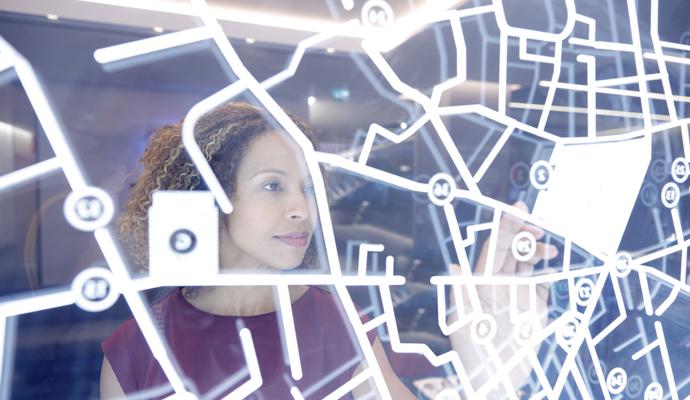Why cool technology sometimes flops
Certain inventions show us that it doesn’t matter how amazing an innovation is if no one needs it.
Sixteen years ago, I stood in a parking lot near a freeway in San Diego and experienced one of the more amazing technology demos of my professional life. About 100 yards away, the sandy-haired, eclectic inventor Woody Norris pointed a metal plate about the size and shape of a cereal box at my head. He hit play on a portable CD player attached to the gadget. Amid the din of cars and trucks whizzing by, I heard the gentle sound of tinkling ice cubes, as clearly as if a bartender were swirling a bourbon on the rocks by my ears.
If I took one step to the side, the ice cube sound disappeared. One step back to the original spot, and the delicate sound was there again, as if coming in through headphones. Somehow, the sound was being beamed in a narrow path right to my head — and nowhere else.
Norris called this invention HyperSonic Sound, or HSS. It was going to change the way we listen to music in cars, hear about promotions in stores, help the blind navigate streets, and probably much more. The potential seemed almost too great to imagine.
Except it hasn’t played out that way. All this time later, beamed sound is at best a niche product and ongoing experiment. This year, Nike used a version of the technology — not Norris’s — in its new flagship store in New York. Amazon installed the same in a visitors’ center at its Seattle headquarters. But mostly, you’d have a hard time finding beamed sound anywhere.
The HSS story shows what can happen when an innovator gives birth to a fascinating technology that doesn’t solve a big enough problem. And it serves as a reminder for innovators and entrepreneurs that without clamoring consumers, cool tech is going nowhere.
We’ve seen this movie many times before. The Segway, an engineering wonder, was supposed to remake urban transportation — and hasn’t. In the 1990s, the satellite network Iridium was built to give us global wireless communication, but has ended up mostly helping workers make phone calls from oil rigs. Google Glass hasn’t found any important purpose. Virtual reality goggles have impacted the lives of only a small slice of the gamer community.
One way of explaining the consumer issue that makes promising tech fall flat involves a concept that author Steven Johnson labels the “adjacent possible,” which I’ve written about before. Johnson says there are two key factors that determine whether a technology takes off: how good it is, and how much the public needs it and is ready to embrace it. Many innovators make the mistake of thinking that cool technology by itself can cross into the adjacent possible. It’s the classic “if you build it, they will come” philosophy. But they don’t always come. Keep in mind that in 2002, Popular Science magazine awarded Norris’s HSS the grand prize for inventions. Second place was the Segway. But the public didn’t give a hoot about either.
People will only care about a technology if it makes a real impact by solving a pervasive problem. As my coauthors and I described in our book, Play Bigger, innovations that have a real impact solve an old problem in a new way, or in some cases, solve a problem people don’t know they have until they are made to see it. (Steve Jobs was a master at that: making us believe our lives would be missing something if we didn’t have an iPhone or iPad, even though we’d never before thought we needed an iPhone or iPad.)
People will only care about a technology if it makes a real impact by solving a pervasive problem.
HSS is a perfect example of a technology that doesn’t solve a pervasive problem. Norris initially had the attention of potential clients. Executives from companies including Sony and Daimler-Benz thought they could put HSS technology in cars, with separate speakers aimed at each seat so every passenger could listen to different music without bugging the others in the car. Walmart looked at it for stores, imagining that customers could walk down an aisle and hear promotions for the products in front of them, without others hearing anything. Cities figured they could stick a speaker at one end of a crosswalk, and a blind person could know he was walking straight across by staying in the sound beam.
But it has turned out that these problems either aren’t actually problems or are just not pressing enough for there to be demand for HSS. Passengers in cars can wear earbuds and listen to entertainment through their phones. (This is more practical for the car companies, too.) Stores have found out that shoppers don’t want to be constantly chirped at with ads. And the visually impaired are doing just fine crossing the street.
So, the HSS story is a cautionary tale. Innovation alone, no matter how impressive, needs to solve a big problem for customers, or it’s not likely to take off.





